As part of the venerable World of Darkness, and perhaps riding on the popularity and anticipation of the upcoming Vampire the Masquerade: Bloodlines 2, Werewolf: the Apocalypse — Earthblood had a lot of potential leading up to release. Regrettably, it lives up to exactly none of it.
I approached it with a sense of cautious optimism, but the end result is some unfortunate time warp of a game that feels at least two generations old and doesn’t manage to do much of anything well.
Werewolf: The Apocalypse Earthblood Review — Cry for the Wolfman
Earthblood is a straightforward third-person action game, where players take the role of a generic gruff-biker-dude-stereotype named Cahal. And the plot is really the first of so many points of contention.
Given the source material, Earthblood could have gone in nearly any direction. Instead, it went in the most clichéd and uninspired way possible.
Cahal is an angry werewolf guy thrown into the predictable angst and redemption arcs that we’ve seen far too many times. The salt in the wound is that it’s just badly done, playing out like fan fiction written by an angsty 14-year-old trying to impress a high school crush who’s, like, totally into, you know, saving the world and stuff.
The game dives straight into the murdered wife cliche, whereupon Cahal loses his shit and accidentally murders a packmate in his unbridled rage. This, in turn, causes him to abandon his pack and, worse, his teenage daughter because he must atone for his sins alone — like a “Man” or something.
Five years pass in the story and, like clockwork, he’s forced back to his old pack and his now-adult daughter. The drama.
It would take too long to go over every absurd Earthblood story detail, but the highlight is probably Cahal infiltrating a prison by, inexplicably, impersonating a wanted serial killer to intentionally get arrested.
It’s bad SyFy movie-level writing, but unlike something like Sharknado, which revels in being trash, Werewolfseems desperate to take itself seriously. There’s little logic in most of the level goals either, which typically boil down to find objective widgets, flip switches, and kill things.
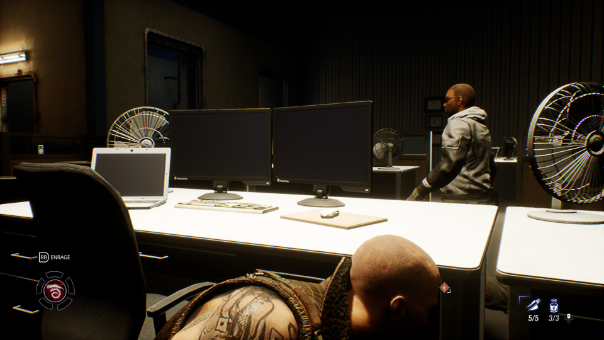
The bulk of the gameplay is divided between stealth and combat, with some awkward running and conversation in between. Cahal has three forms: human, wolf, and a brutish combat-able wolfman. In human form, he sneaks around and can shoot certain things, like security cameras and enemies, with his very limited crossbow, though it’s better to just perform stealth takedowns and find computer terminals spread around to shut off the cameras.
The speedier wolf form is vital because human Cahal is slow, and you’ll want to run through these levels as fast as possible. The wolf form is also stealthier and can bark to attract attention.
The hulking hybrid rage form is for combat when stealth fails; there are even spots where you can rage out during dialogue, which is undeniably funny, as violent murder makes any of the game’s conversations better.
The hybrid form has an agile and heavy attack stance, each with their own special moves, but the action is largely a chaotic mess of bashing and dodging unblockable attacks. By the end of the game, the combat feels so repetitive that even the initial gimmick of decorating the rooms with gore can’t save it. Grabbing and executing enemies refills the rage bar (needed for special attacks), but even the execution moves are repetitive and boring.
Old-school stealth is the other major component, and I mean old-school like 90s-era PlayStation stealth. Werewolf takes no chances making sure players know when it’s stealthy time, as it automatically shoves Cahal into his stealth crouch and doesn’t let him up until combat starts or he leaves the area.
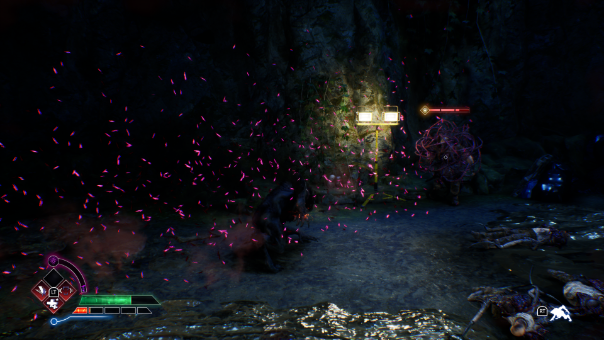
The entertainment value of these sequences comes entirely from how unbelievably stupid the AI is. Levels are filled with stealth puzzle rooms where guards stand or patrol in predetermined spots mindlessly waiting for something to cross their limited vision cone.
If you run past an enemy’s line of sight, its awareness meter (an eye-shaped gauge) starts filling. Move out of sight and the gauge lowers. Once an enemy is alerted (and their panic can cause surrounding enemies to become alerted too), they stay that way either forever or until you kill them.
As long as enemies never reach that alert level or catch sight of a dead body, however, they remain oblivious to nearly anything. You can pluck their co-workers off from behind cover even if they’re standing right by them. Many of these room-size murder-puzzles rely on this hilarious obliviousness, as the trick is to just find the path that lets you kill each enemy in turn based on where they’re standing.
There’s a simple, if stupid fun to be had here, somewhat ruined by certain enemies that Cahal simply can’t stealth kill. These include hulking mechs and larger brute soldiers. Once the enemy is alerted, any doors or vent shaft entrances (which are, naturally, how wolves travel through buildings) are locked down. This is important, because it hides a gaping-sized hole in the game’s logic.
Enemies, as it turns out, only work in the specific room they live in. They can’t see you through grates, windows, or (most fantastically) doorways. This means you can entertain yourself by running through doors, catching one’s attention, murdering them, then running back through the door before any other alert meters fill. Cahal can hang in the doorway jumping up and down, and it just doesn’t matter.
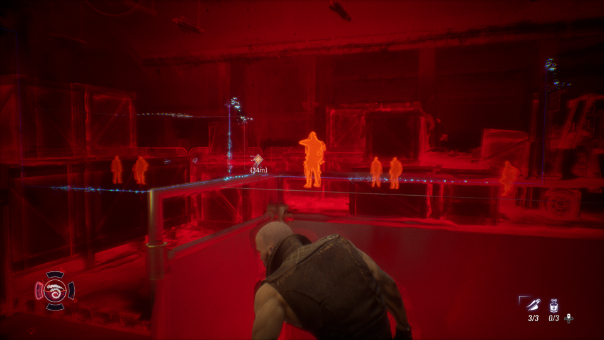
Various other glitches and just outright cheap elements abound, especially in the visuals department. Character models are a murky, smudgey bunch, reminiscent of early HD models on PS2 and the original Xbox. During interactions, they come across as creepy, lifeless mannequins.
The exception comes in the form of the spirits spread around the landscape. These strange creatures are actually intriguingly designed, especially the two clan protectors you meet.
One is a massive tree spirit with a hulking man’s body and glowing orb for a head. The other is a gorgeous winged skeletal snake. Sadly, the enemies are a generic lot of soldiers, the occasional bad werewolves, and inexplicably by the end, a group of bad Resident Evil 4 knockoffs culminating in an end boss that is truly awful from both a design and plot standpoint.
There are also collectible plant and other spirits Cahal finds by sniffing shrubs, trees, and even potted plants hidden around the levels. These are then used as currency for the basic upgrade system that improves some of Cahal’s abilities. There’s a lot of running around looking for things to sniff in Werewolf, which is probably more unintentionally amusing than most of the rest of the game.
Werewolf: the Apocalypse — Earthblood: The Bottom Line
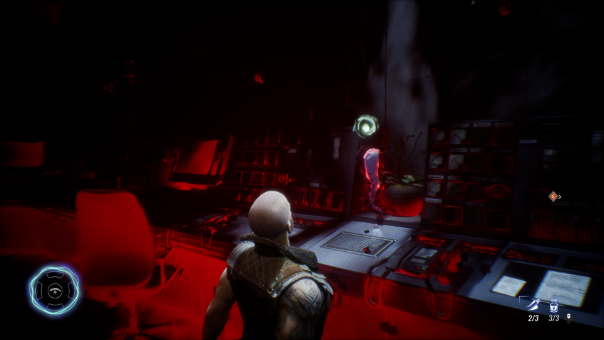
Pros
- Rage mode violence can be amusing
- Three body forms is a cool idea
- Often hilarious, if for all the wrong reasons
Cons
- Subpar graphics, incredibly bad writing
- Hilarious stupid, primitive AI and stealth mechanics
- Mostly boring combat
As if suffering from some bizarre form of virtual Stockholm Syndrome, I felt nearly compelled to see Earthblood through. The game ended up more entertaining because of the barebones effort put into it, resulting in humorous bugs, glitches, and just plain nonsense.
On some level, it’s almost worth playing for the same reason bad sci-fi and horror movies are worth watching, but that’s definitely not a recommendation.
[Note: Cyanide provided the copy of Werewolf: The Apocalypse — Earthblood used for this review.]

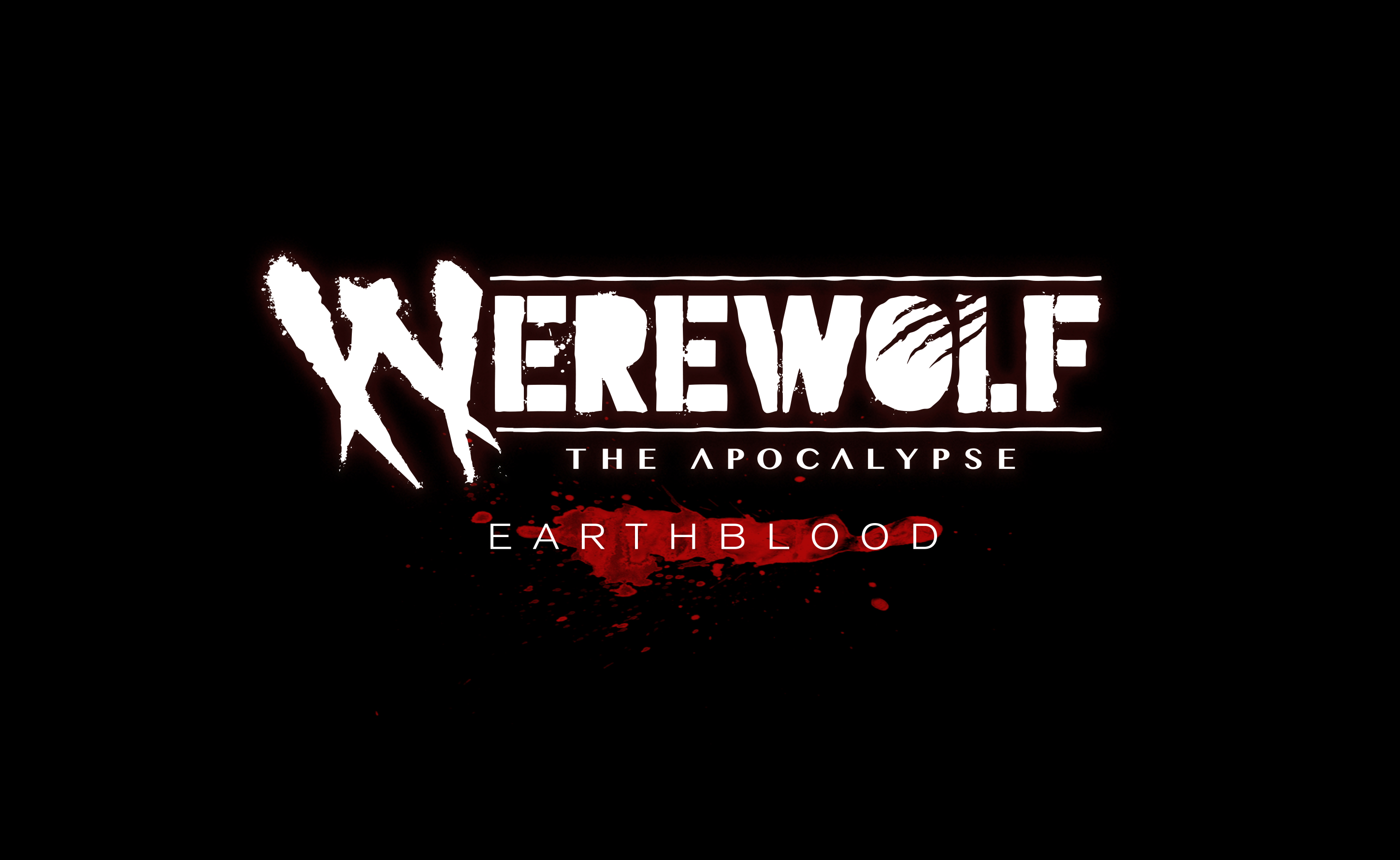





Published: Jan 31, 2021 09:31 am